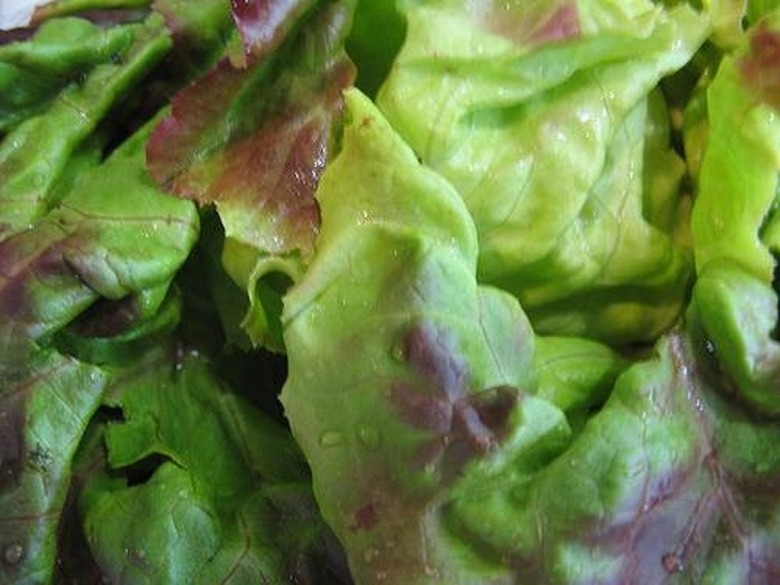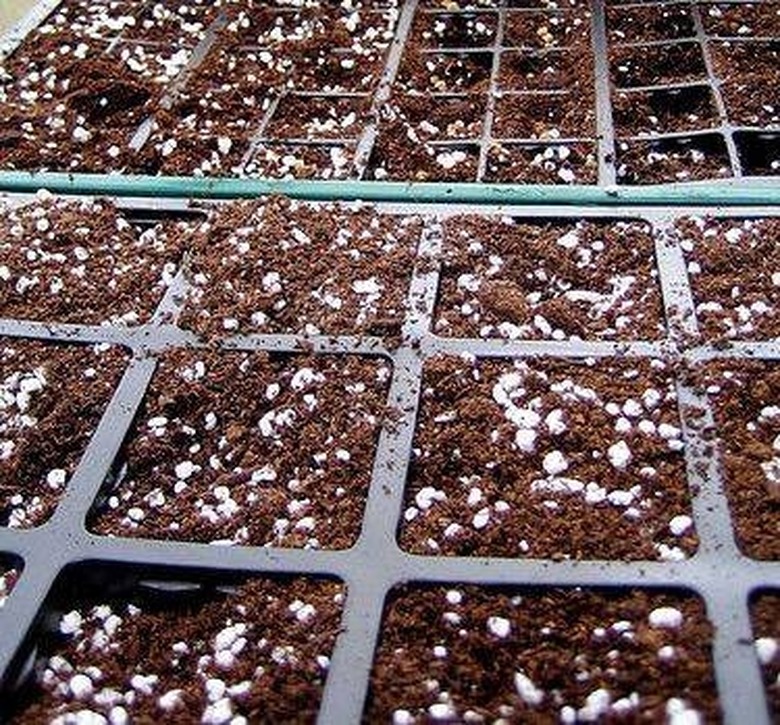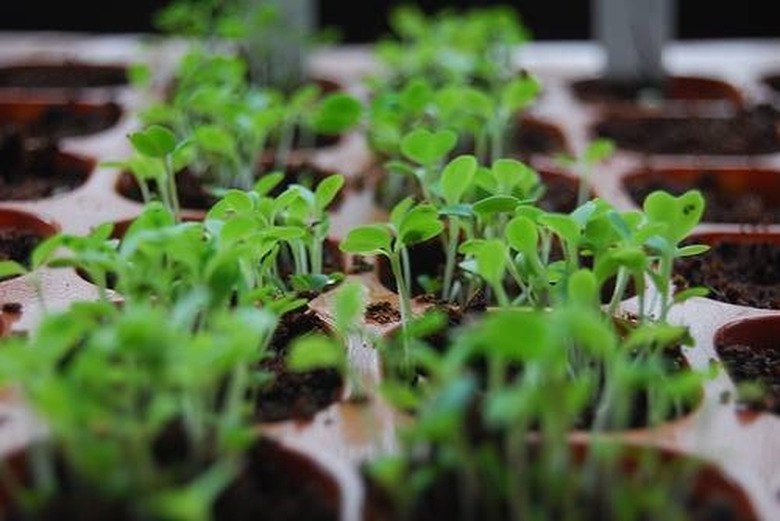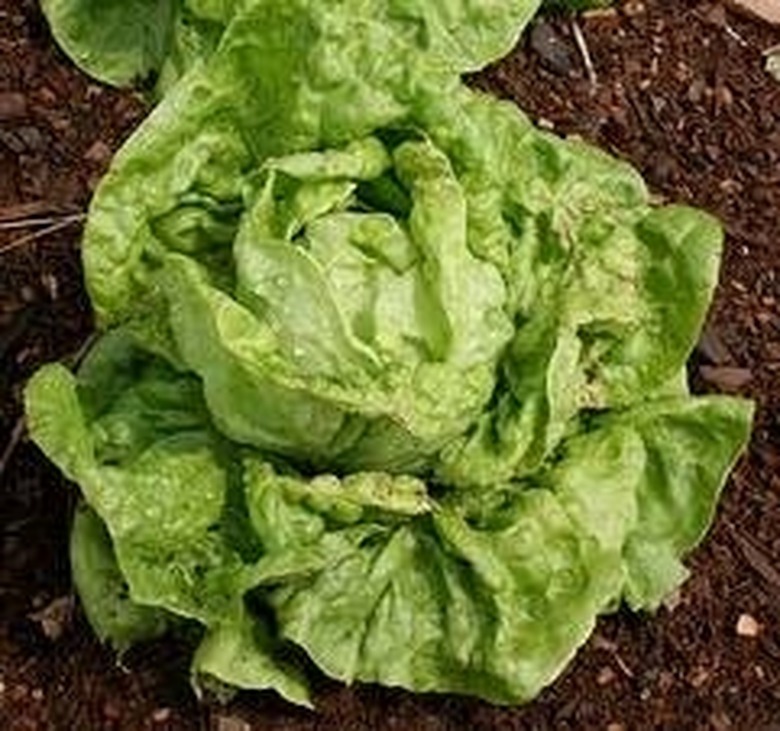How To Grow Letttuce In A Greenhouse
Things Needed
- Shallow seed rays
- Humus-based potting oil
- Lettuce seeds
- Water mister
- Plastic wrap
- 1-gallon plastic or clay pots
- Organic fertilizer
One way to ensure you can eat salad year-round is to grow your own lettuce. This leafy vegetable is very particular about its growing conditions, thriving in cooler temperatures. Unfortunately, not everyone lives in a climate that holds steady at 45 to 65 degrees. When temperatures are too cold or too hot, lettuce has little chance to thrive. With a greenhouse, you can control the temperature inside and your reward is tasty, crisp lettuce and your own gourmet salads.
Step 1
Fill[ [your seed tray ]](https://www.gardenguides.com/how_8260886_cultivate-wild-black-raspberries-seeds.html)your seed tray ¾ inch to the top with the humus-based potting soil. Lettuce thrives in soil rich in organic matter, so if humus-based soil is not available, you can create your own by mixing potting soil with rich compost.
Step 2
Scatter the lettuce seeds across the soil in the seed tray, making sure to space thinly. Next, cover the seeds with a thin layer of additional soil, packing down lightly with your fingers.
Step 3
Water the seed tray with a light misting of water, ensuring the soil is moist but not laden with water. You can use a water mister attachment on your garden hose or a water container with a spray mister attachment.
Step 4
Cover the top of the seed tray in plastic wrap as this will trap moisture and prevent the seeds from drying out. Place the seed tray on a wire rack or slatted shelf so that air can circulate around it.
Step 5
Maintain a temperature in the greenhouse around 50 to 60 degrees–the lettuce seeds will not germinate in warm temperatures. This may be achieved through the use of a portable heater or air conditioner, depending on your climate. Your greenhouse may have vents so these can be adjusted based on the temperature outdoors.
Step 6
Check your seed tray each day, feeling the moisture of the soil with your fingertips and misting with water as necessary.
Step 7
Remove the plastic wrap once lettuce seedlings reach a height of about an inch, and then thin the seedlings to avoid overcrowding. The optimal space between each seedling is one to two inches. Once the seedlings grow two or three leaves, they are ready for transplantation. This typically takes four to six weeks after germination.
Step 8
Fill the 1-gallon containers with the humus-based potting soil, mixing in a small amount of organic fertilizer. Follow manufacturer's instructions to determine the amount needed for seedlings.
Step 9
Poke a hole using your finger or a small stick into the soil deep enough to accommodate the stringy roots of the lettuce seedling. Fill the small hole with water.
Step 10
Extricate a lettuce seedling from the root tray gently, taking care not to tear the roots. Try to keep some soil clinging to the roots as this will help the seedling adapt more quickly in its new pot.
Step 11
Place the seedling inside the hole, roots down, until the tiny leaves are the only things visible. Fill the hole with soil, covering the seedling roots. Pat into place gently with your fingertips to ensure the seedling stays upright. Repeat the planting process with the other seedlings.
Step 12
Water the transplanted seedlings as needed with the mister, maintaining moist soil.
Step 13
Work a small amount of fertilizer into the soil with your fingers every two weeks, taking care not to disturb the lettuce roots.
Step 14
Harvest the lettuce once it has grown big enough, typically about 60 days after transplantation. Each lettuce variety matures at a different rate and may require different harvesting techniques. For instance, iceberg lettuce requires that you cut it at the root but varieties of romaine or red leaf lettuce can be harvested by gently pulling away the leaves or using scissors and cutting them about 3 inches from the root base. Some lettuce varieties will grow new leaves after cutting.
Tip
To maintain a steady supply of lettuce throughout the year, plant lettuce seeds in a seed tray every two to three weeks and transplant into pots as necessary. Lettuce may also be transplanted into long, window box-like planters. As long as the transplanted lettuce seedlings have room to grow and spread, you can choose the container of your choice.
Warning
Be careful not to damage the roots of the lettuce seedlings when transplanting. Any damage to the roots can court disease.



